양양 선림원지 통일신라 '금동보살입상', 5년만에 금빛 드러내
임동근 기자 / 기사승인 : 2021-02-03 14:59:30
문화재연구소 5년간 보존처리…청동녹에 가렸던 눈·수염 나타나
k-odyssey.com/news/newsview.php?ncode=179560834182841
양양 선림원지 통일신라 ′금동보살입상′, 5년 만에 금빛 드러내
(서울=연합뉴스) 임동근 기자 = 2015년 10월 강원도 양양군 서면 선림원지에서 통일신라 시대 금동보살입상과 불상을 받치는 대좌(臺座)가 발굴됐다. 이 보살입상은 출토지가 명확한 보살입상으로
k-odyssey.com
Completion of Conservation Treatment for the Gilt-bronze Bodhisattva Statue Excavated from Seollimwon Temple Site, Yangyang by the National Research Institute of Cultural Heritage
- Restoring original shapes with gold color and values of the gilt-bronze Bodhisattva statue from Unified Silla period by conservation treatment for 5 years
- Identifying clear ink lines of eyes and mustache hidden beneath bronze corrosion-
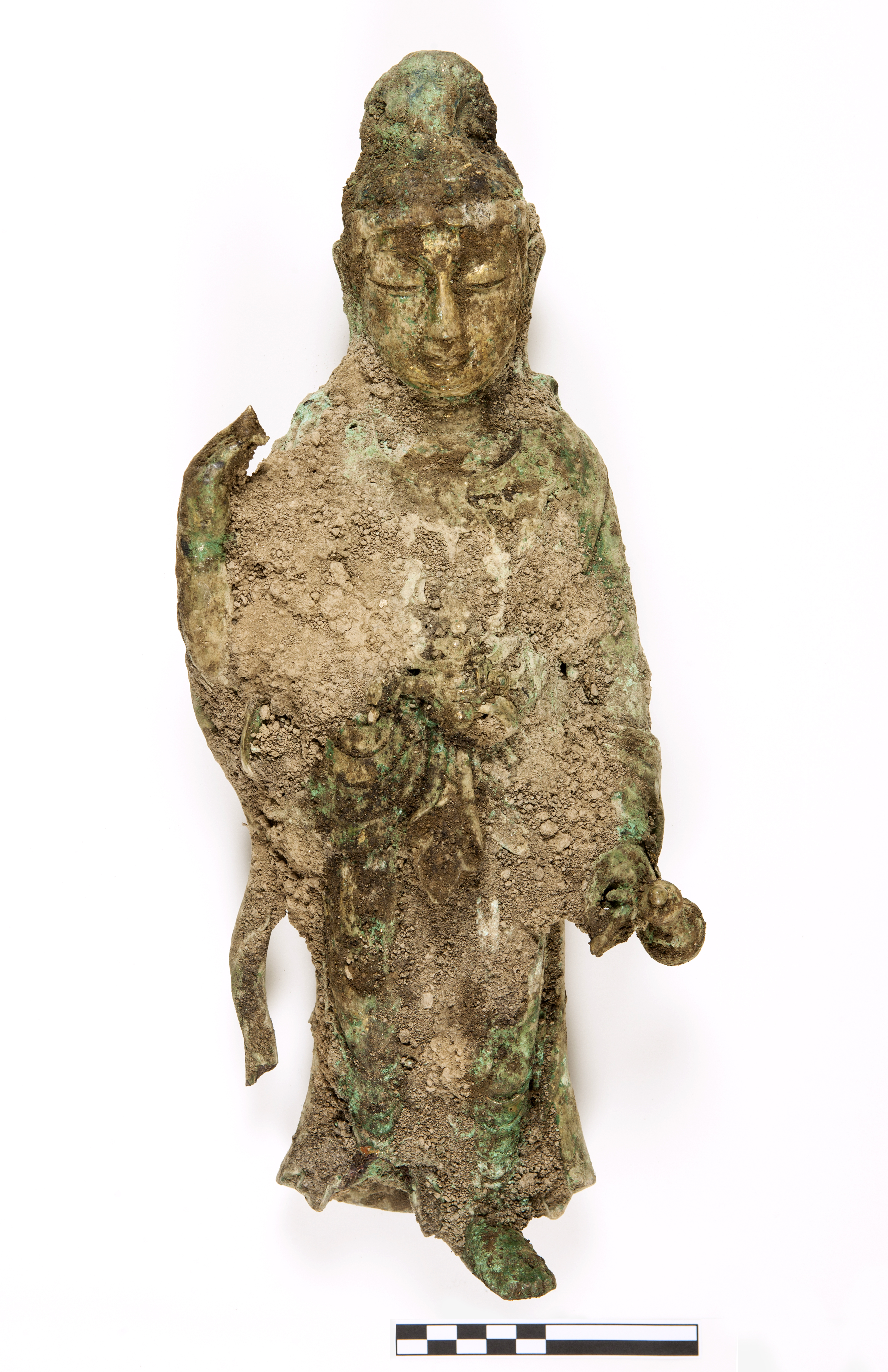
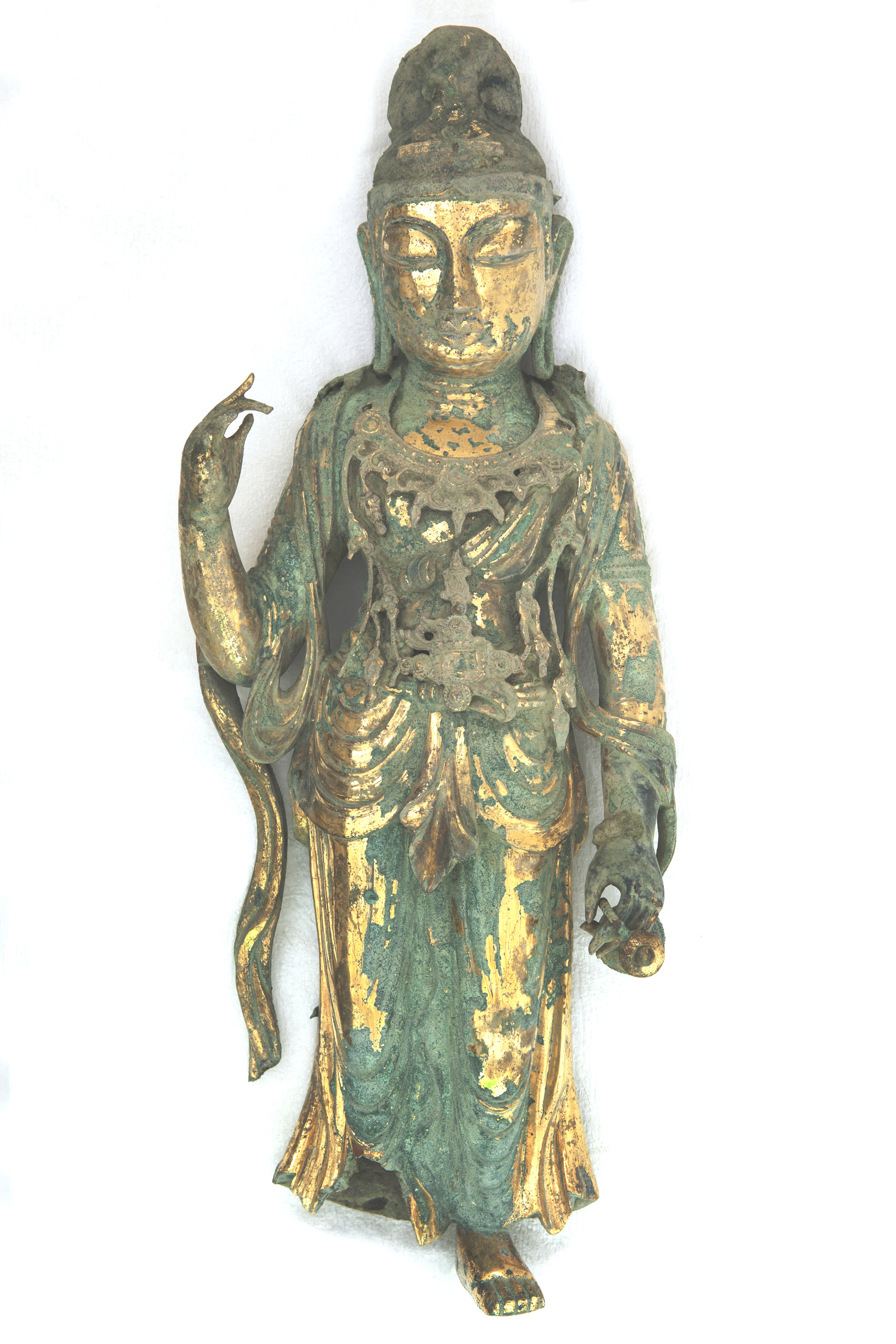
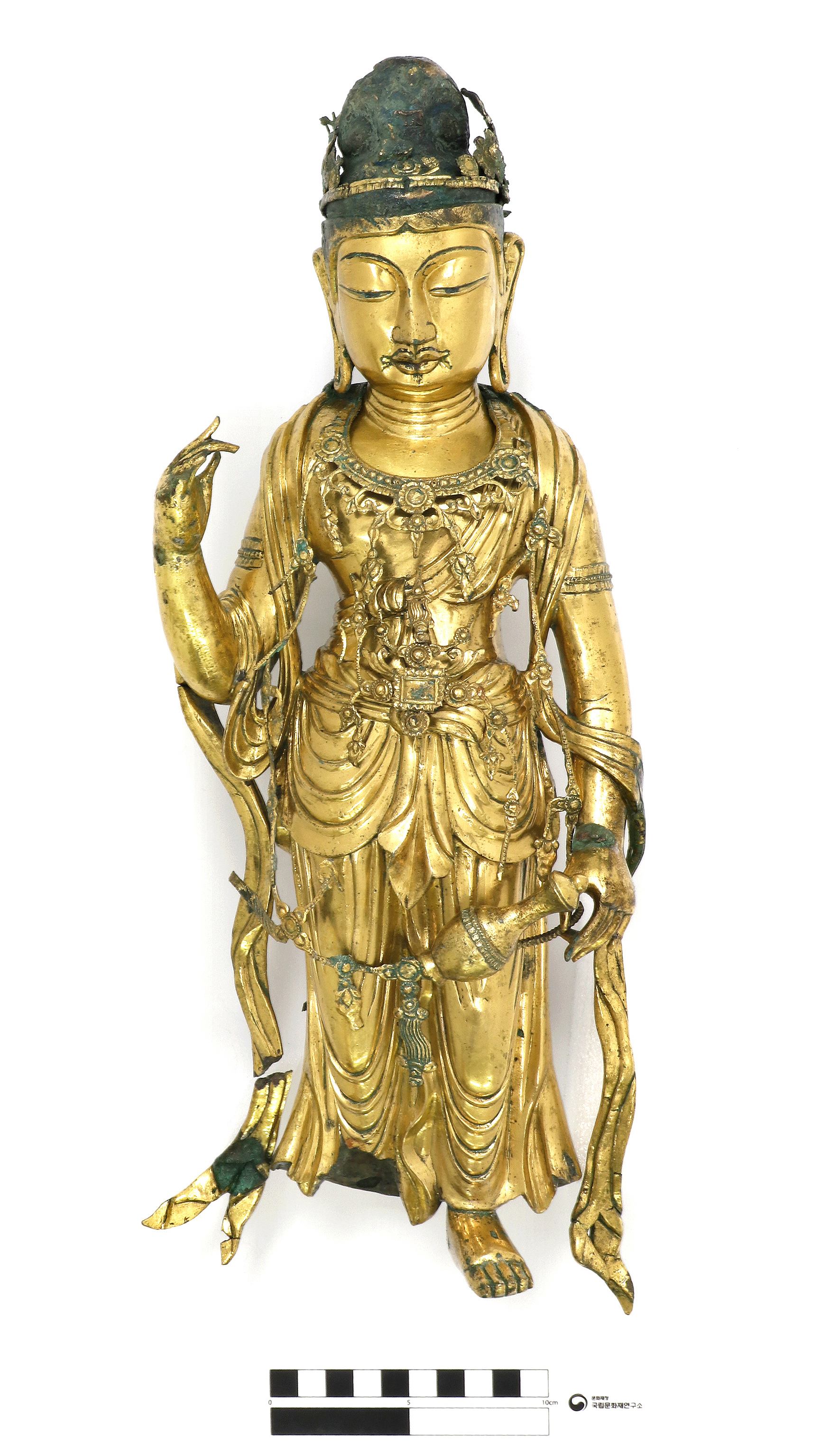
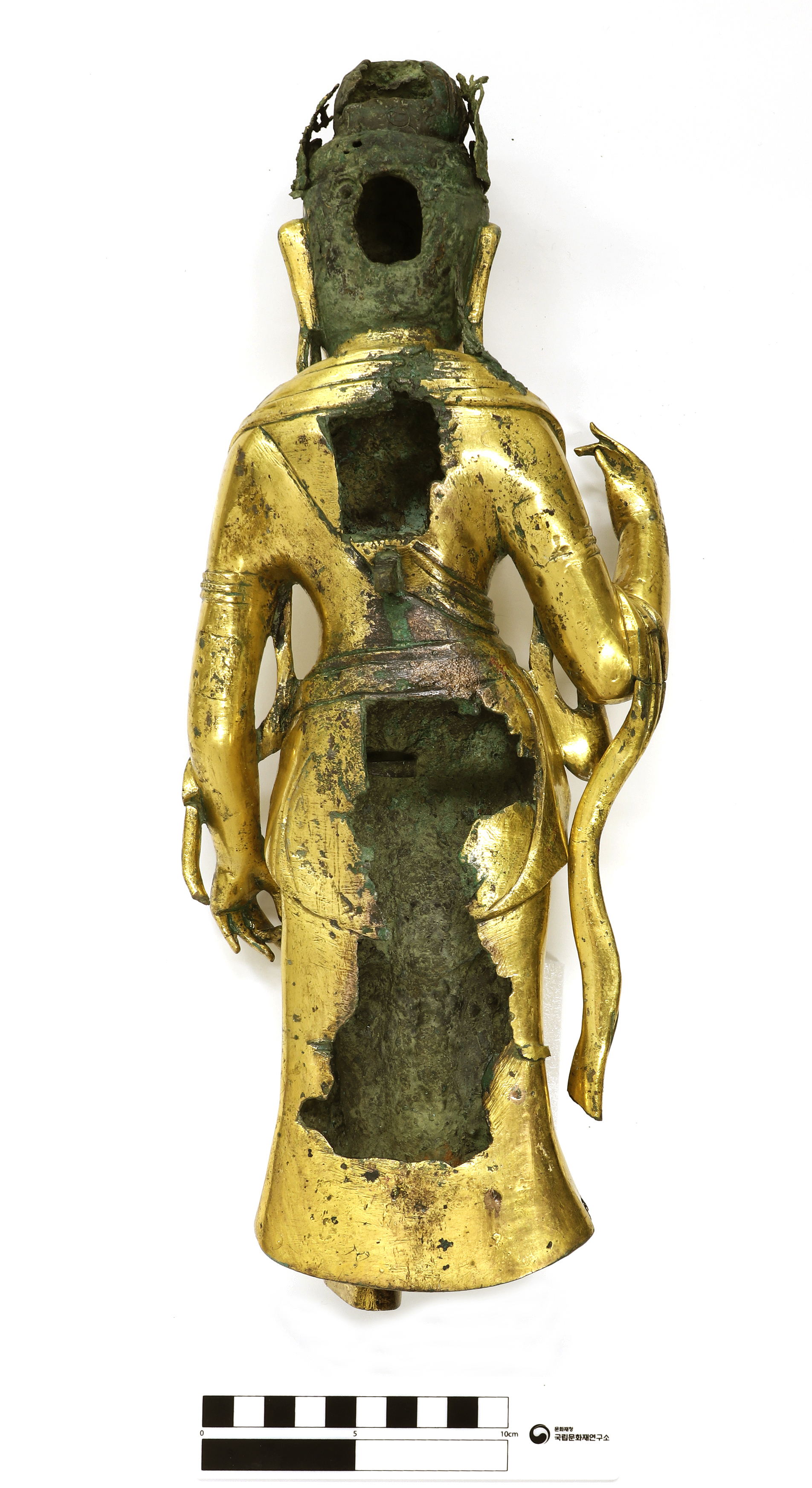
The Cultural Heritage Conservation Science Center (CHCSC, Director, Jeong Soyoung) in the National Research Institute of Cultural Heritage (NRICH) under the Cultural Heritage Administration of Korea completed conservation treatment for the gilt-bronze Bodhisattva statue of Unified Silla period which was excavated from Seollimwon Temple Site (Yangyang-gun, Gangwon-do, Korea) in October, 2015.
The 9th century Unified Silla-era gilt-bronze Bodhisattva statue (hereinafter referred to as the statue) from Seollimwon Temple Site is the largest (38.7cm in height and 4.0kg in weight - the statue, 14.0cm in hight and 3.7kg in weight - the pedestal) among Bodhisattva statues whose excavation sites were exactly known, and the pedestal and halo which were carved splendidly remain intact, which made the statue draw great attention. CHCSC devoted 5 years until the present to restoration for its original shape in gold color and determined its manufacturing technique and period when it was manufactured.
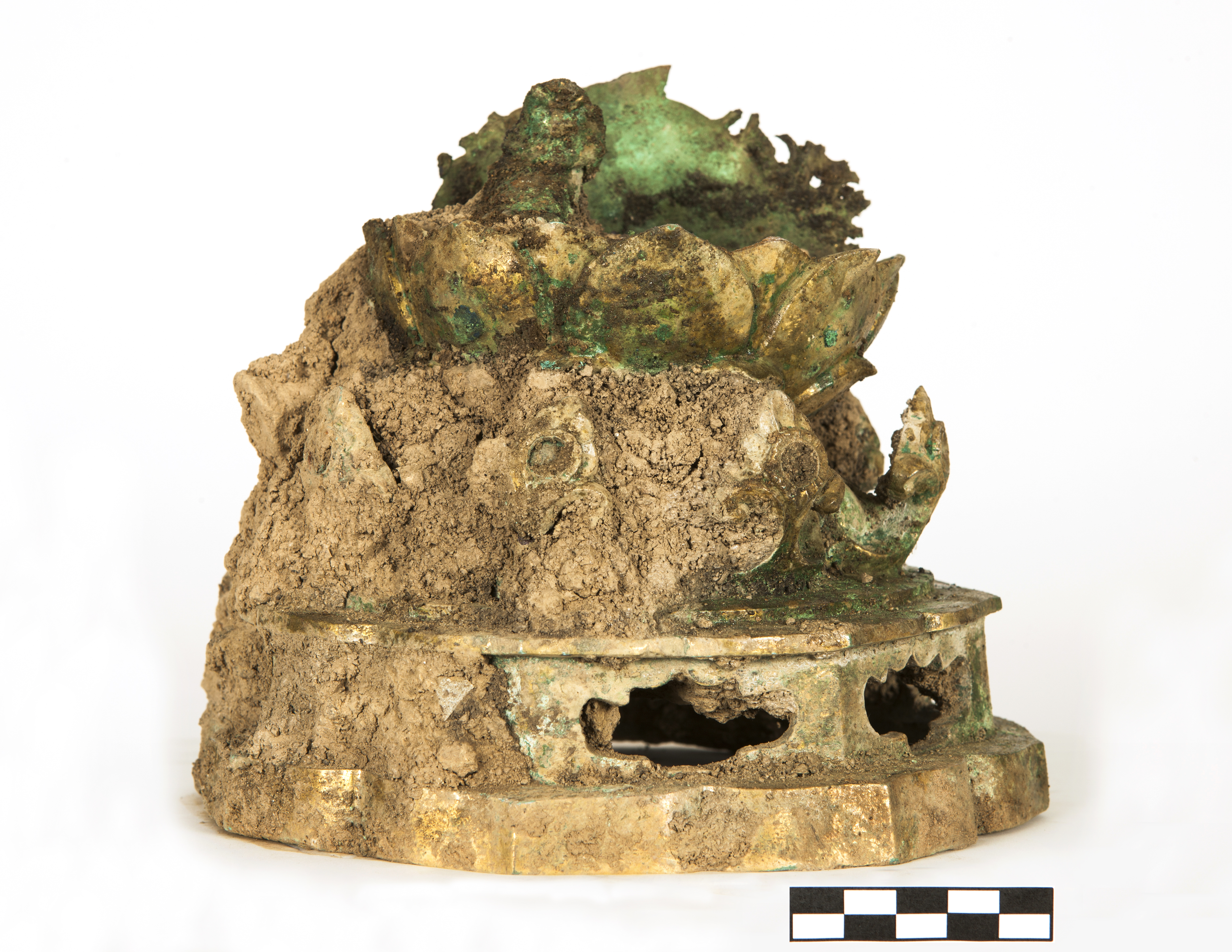

At that time of excavation, the surface of this statue has been thickly covered with soil and greenish corrosion, and its right ankle has been broken and separated from the pedestal, and even the halo has been broken into several pieces, which required urgent conservation treatment. In response to its condition in need of conservation, the CHCSC urgently took it over from Hanbit Institute of Cultural Properties which conducted the excavation and survey beforehand, and started scientific research and conservation treatment from January, 2016 to December, 2020.
First of all, the scientific research such as X-ray, endoscopy and material analysis was carried out and subsequently it was followed by the process of conservation treatment in the order of corrosion removal, consolidation, joining and restoration.

As a result of research, the gilded layer was unstable as its form was manufactured with copper alloy and gilded with gold, and greenish bronze corrosion was situated on it. To restore its original color of gilded layers, removal of bronze corrosion was required but it was firmly attached to the gilded layer. Therefore, the corrosion layer was removed one by one with meticulous care while it was closely observed at high magnification under a microscope, which was such a fastidious and demanding process of conservation work. The corrosion removal was the most significant process for restoring the shape and value of the statue, taking much time over 4 years.
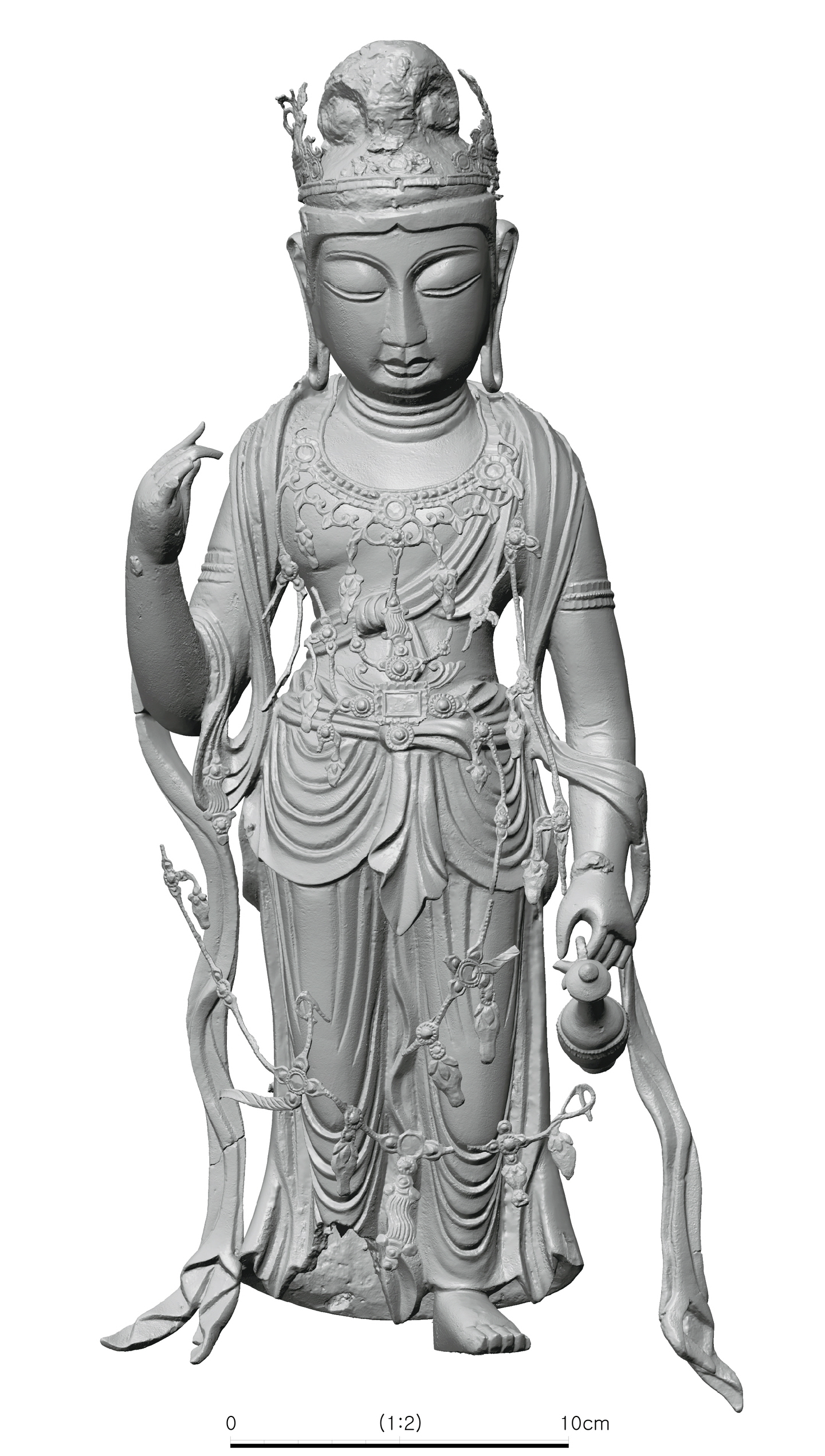
Such a process led to revealing gilded layers clearly and moreover, delicately drawn on ink lines the gilded layer could be found as well. Areas with ink lines were identified at 4 points from eyebrows, eyes (shapes, pupils), mustache and the rim with an elephant-eye motif by wwwwork on the pedestal. In particular, its pupils drawn in ink could be found beneath bronze corrosion by microscopy at high magnification.
The statue was urgently collected on the spot of the excavation and for that reason, CHCSC could obtain important materials left such as paper and gold leaf from the inside and surface of the statue. As there were no inscriptions and only some parts of them remain, what those had been used for could not be figured out.
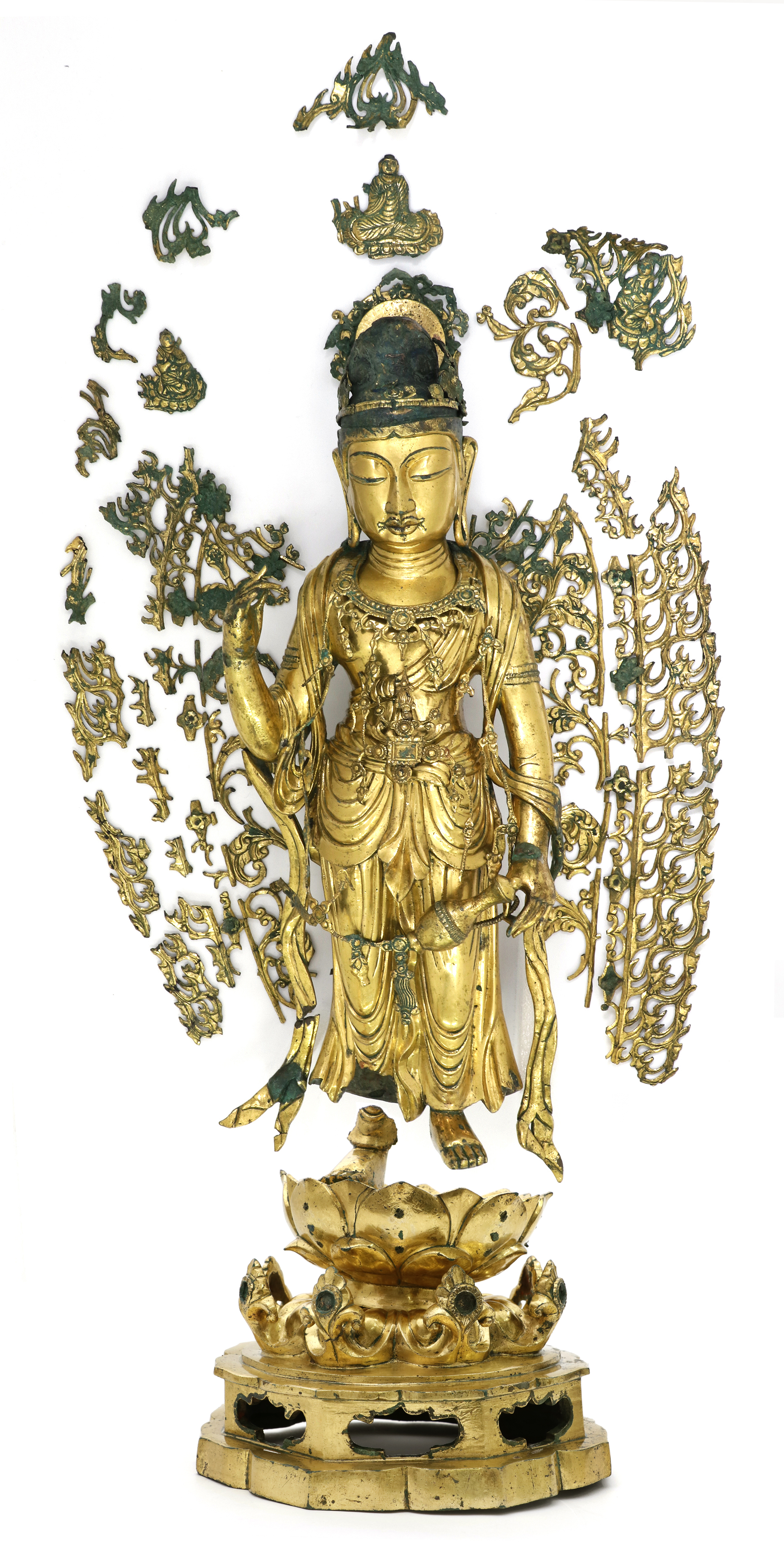

However, from the fiber analysis to know material quality of paper, it was identified that all of them were paper made from bast fiber of the paper mulberry of Korea and by radiocarbon dating, the data of absolute ages around the 7~9th century was acquired. When considering the period when Seollimwon Temple prospered around 804 AD (the 5th year of King Aejang), the period of its production was reconfirmed to be Unified Silla period.
From the research on the manufacturing process, it indicates that the statue was cast as the single-piece object with copper alloy, and marks of molding holes were found at the back of both arms from the result of X-ray and those holes are presumed to have been plugged up with gold plates and gilded after a casting was completed.


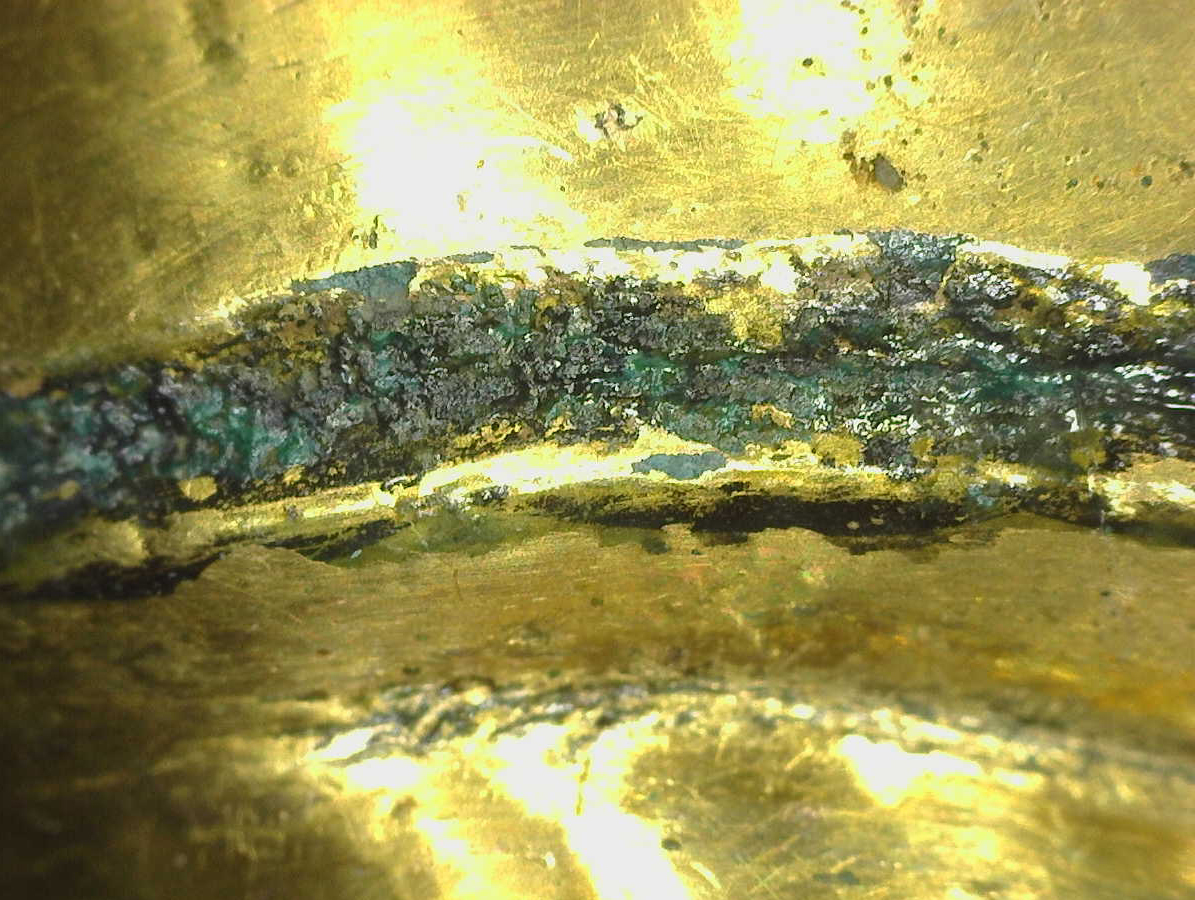
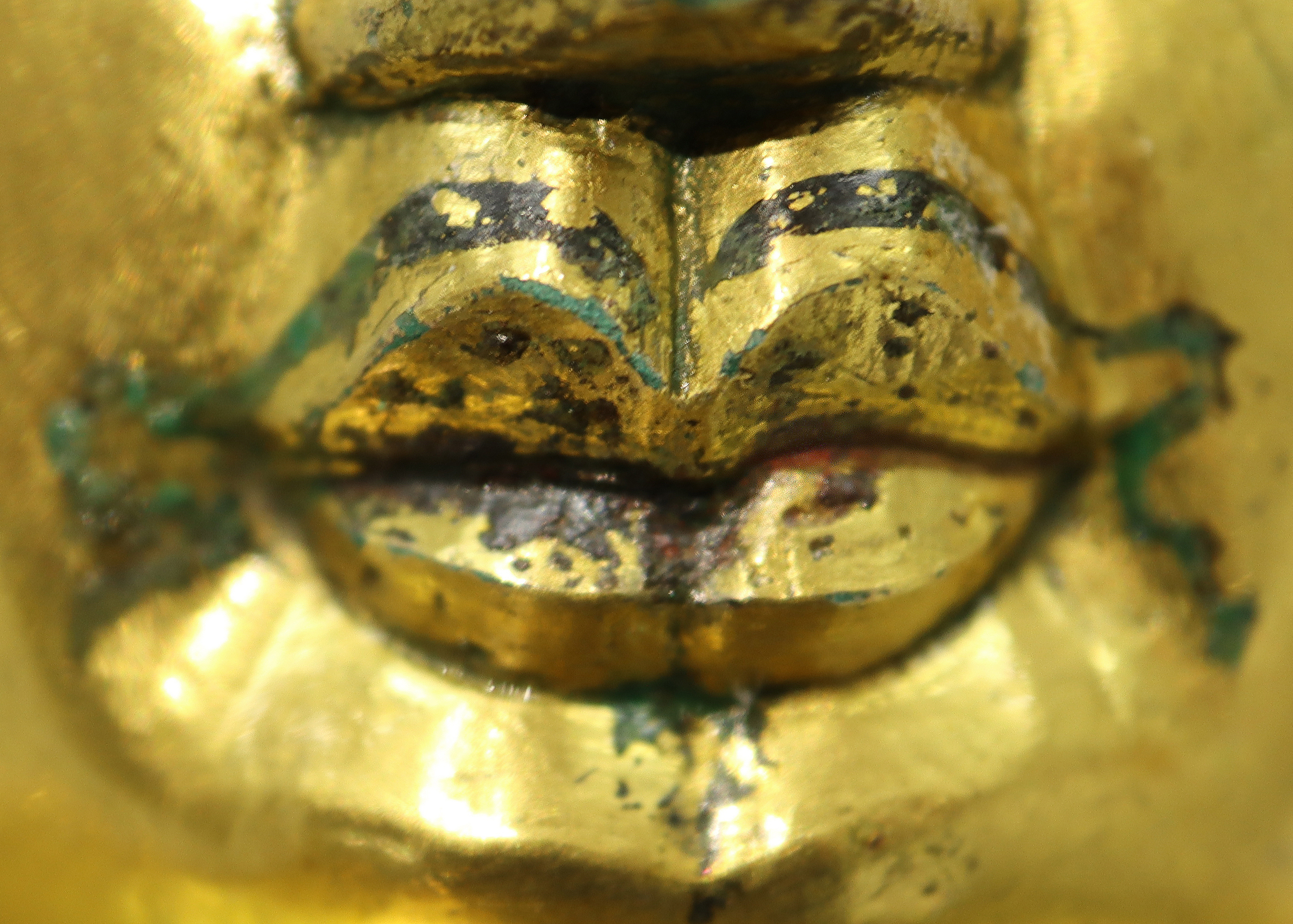

In addition, a high mercury content and granular gold were identified from the surface analysis of the statue, which revealed that amalgam gilding by mixing gold powder and mercury had been applied for manufacturing it. And there were red pigments observed from the back of decorations on the statue as well as the back of floral decorations at the end of lotus leaves on the pedestal. Pigments were identified to have been Jinsa, Yeondan and the pigment mixed with Jinsa, and some red pigments still remain on its lips faintly.
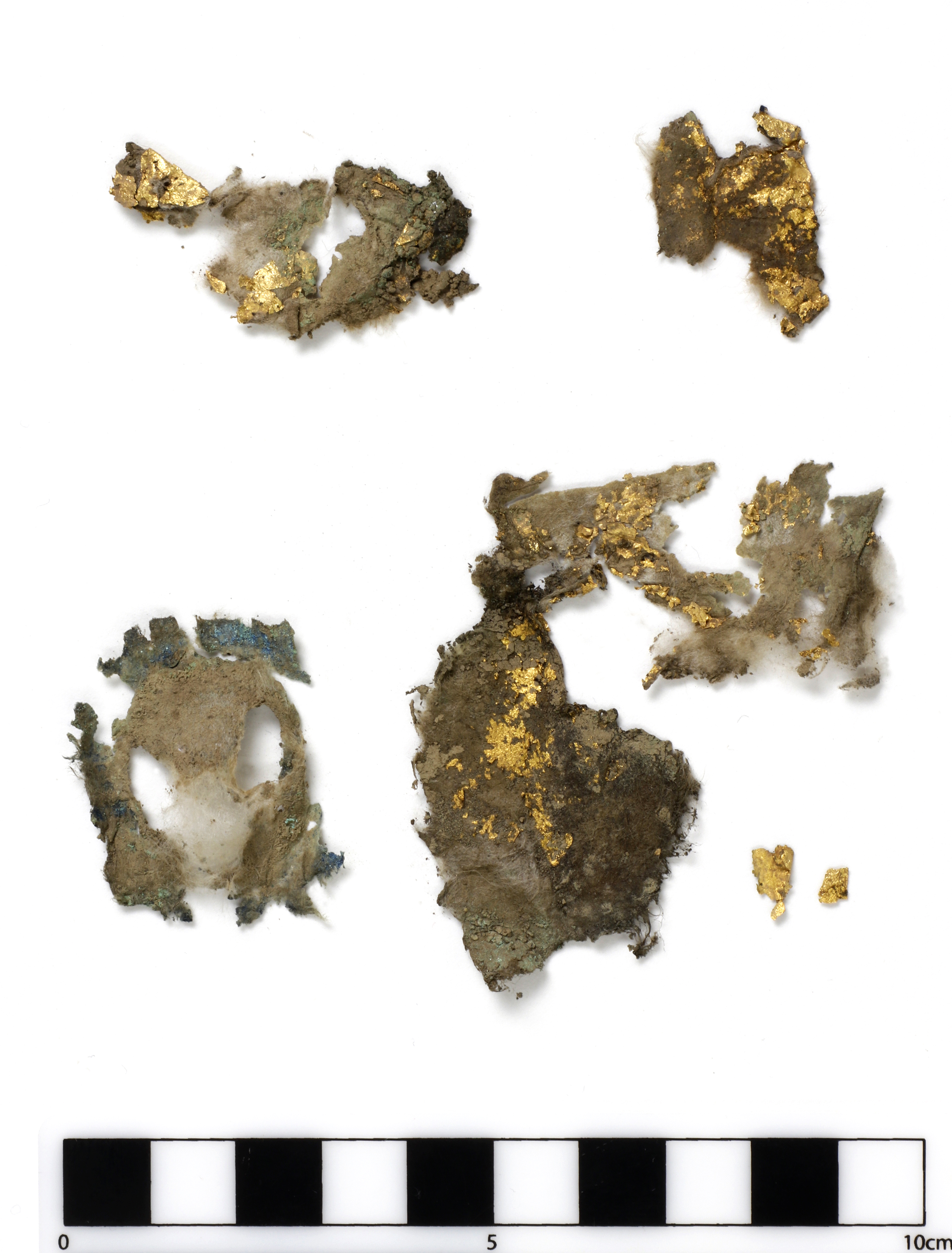
Most of the navy pigments from hair were exfoliated by surface corrosion but dark navy pigments in some areas were identified to have been Seokcheong which was used as the old traditional pigment with natural minerals to make deep dark blue color from the past.
*Jinsa (辰砂, HgS / Cinnabar): Red pigment made with mineral of mercury sulfide in red base
*Yeondan (鉛丹, Pb3O4 / Minium): Red pigment made by heating lead carbonate which is artificially manufactured after corroding lead
*Seokcheong (石淸, Cu3(OH)2∙(CO3)2 / Azurite): Blue pigment made with azurite
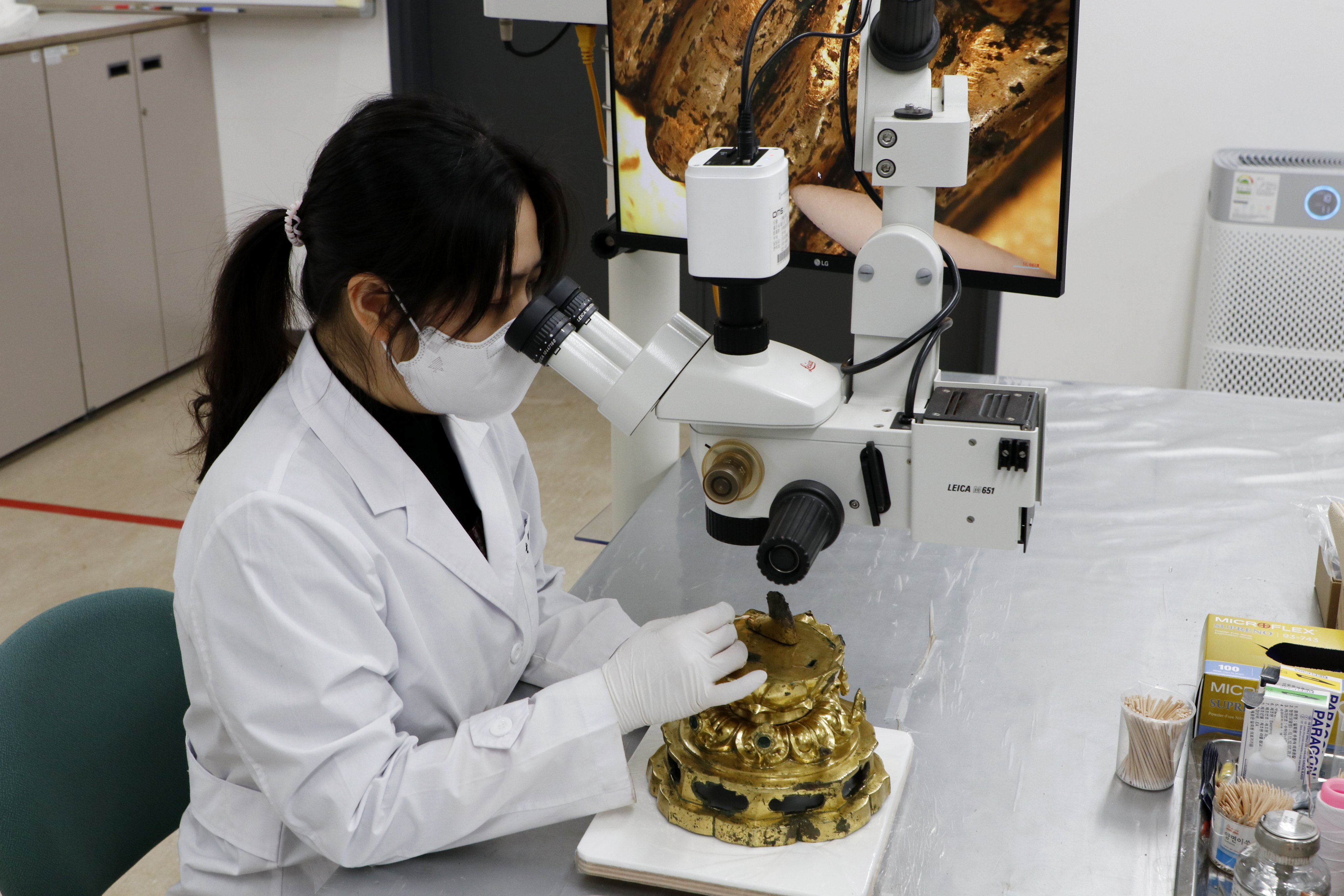

The CHCSC made its effort to restore the shape of the statue with Hanbit Institute of Cultural Properties through 3D scans and image restoration and could succeed in restoring for the original shape of the statue in the end. In the case of decorations such as Bogwan, Yeongrak, Jeongbyeong besides the statue, halo and pedestal, those decorations were identified to have been separately manufactured and then joined to the statue respectively. Some shapes of them were transformed during the excavation, which made it difficult to join them for restoration.
* Bogwan(寶冠): A crown decorated with jewelry or metal on the top of Buddha statues
* Yeongrak(瓔珞): Decorations by stringing beads with metal or gems for Buddha statues
* Jeongbyeong(淨甁): A Water jug with a long neck, connoting offering pure water to Buddha as a symbol of mercy to relieve pain and thirst of mankind
As of now, it is difficult to join the broken right ankle to its pedestal since the completion of conservation treatment this time. The National Research Institute of Cultural Heritage is planning to connect the statue with the pedestal by digital restoration based on cutting-edge technology such as 3D scan data and 3D printing.
'NEWS & THESIS' 카테고리의 다른 글
| Commemorative Medal for Emperor Sunjong’s Enthronement (0) | 2021.02.03 |
|---|---|
| 보존처리를 통해 재림한 9세기 통일신라시대 선림원지 금동보살입상 (0) | 2021.02.03 |
| 조선 중기의 충주박씨 거물들 박상-박순 초상화 (0) | 2021.02.02 |
| 한성백제박물관 <왕성과 왕릉> 특별전 (0) | 2021.02.01 |
| 베수비오화산이 매몰한 헤르쿨라네움 해변 발굴 재개 (0) | 2021.02.01 |




댓글